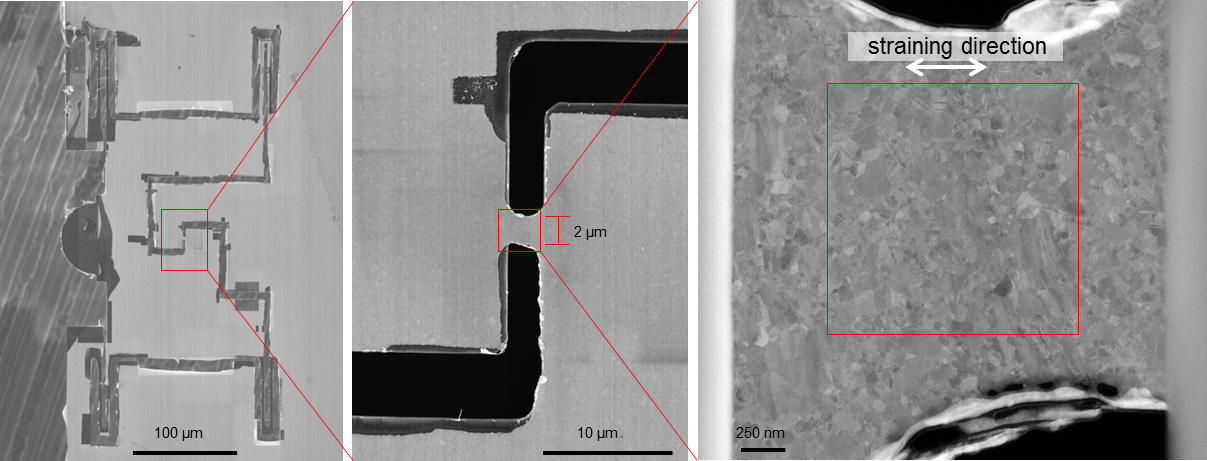In-situ Mechanics in the TEM
We have been developing the combination of in-situ straining experiments using a Hysitron PicoIndenter with a Push-to-Pull device together with automated crystal orientation mapping (ACOM) using a NanoMegas ASTAR system. The straining is monitored in situ using up-STEM on a FEI Tecnai F20 and, at seleted points, orientation maps are acquired during holding segments of the straining series. This enables adirect quantitative analysis of crystallographic changes during mechanical straining with nanometer resolution.

Fig. 1.1: PTP device for in situ straining of thin-films in the TEM.
The total acquisition time of 6 and 12 hoursa for a compelete straining series puts very high demands on the mechanical stability of the microscope and the straining holder. Under displacement controled operation of the Picoindenter, some relaxation of the stage can not be prevented, but the stability is sufficient for a qualitative evaluation of the straining state for the different orientation maps (Fig. 1.2). This approach was used to e.g. follow the grain growth (Fig. 1.3), twining and grain rotation in nanocrystalline gold.

Fig. 1.2: Stress-strain curve of the repeated deformation of a nanocrystalline Au film under displacement control. The stress-strain curve shows that the film was initially slightly bend and is first straightening during the deformation, before the 'normal' straining of the film occurs.

Fig. 1.3: Anomalous grain growth during in situ straining of ncAu.
By operating the PicoIndenter under load control, a much better stability mechanical stability can be achieved, which enables working at reliable straining states. Despite the relatively long data acquisition times, creep is not contributing significantly to the deformation except for the straining states close to failure of the thin film.

Fig. 1.4: In situ straining under load control and corresponding stress-strain curve with creep contribution during ACOM acquisition.
Details of this work have been published and are available at
- A. Kobler, A. Kashiwar, H. Hahn, C. Kübel, "Combination of in-situ straining and ACOM TEM: a novel method for analysis of plastic deformation of nanocrystalline metals", Ultramicroscopy, 2013, 128, 68-81; DOI: 10.1016/j.ultramic.2012.12.019.
- A. Kobler, C. Brandel, H. Hahn, C. Kübel, "In situ observation of deformation processes in nanocrystalline face-centered cubic metals", Beilstein Journal of Nanotechnology, 2016, 7, 572–580; DOI: 10.3762/bjnano.7.50.

